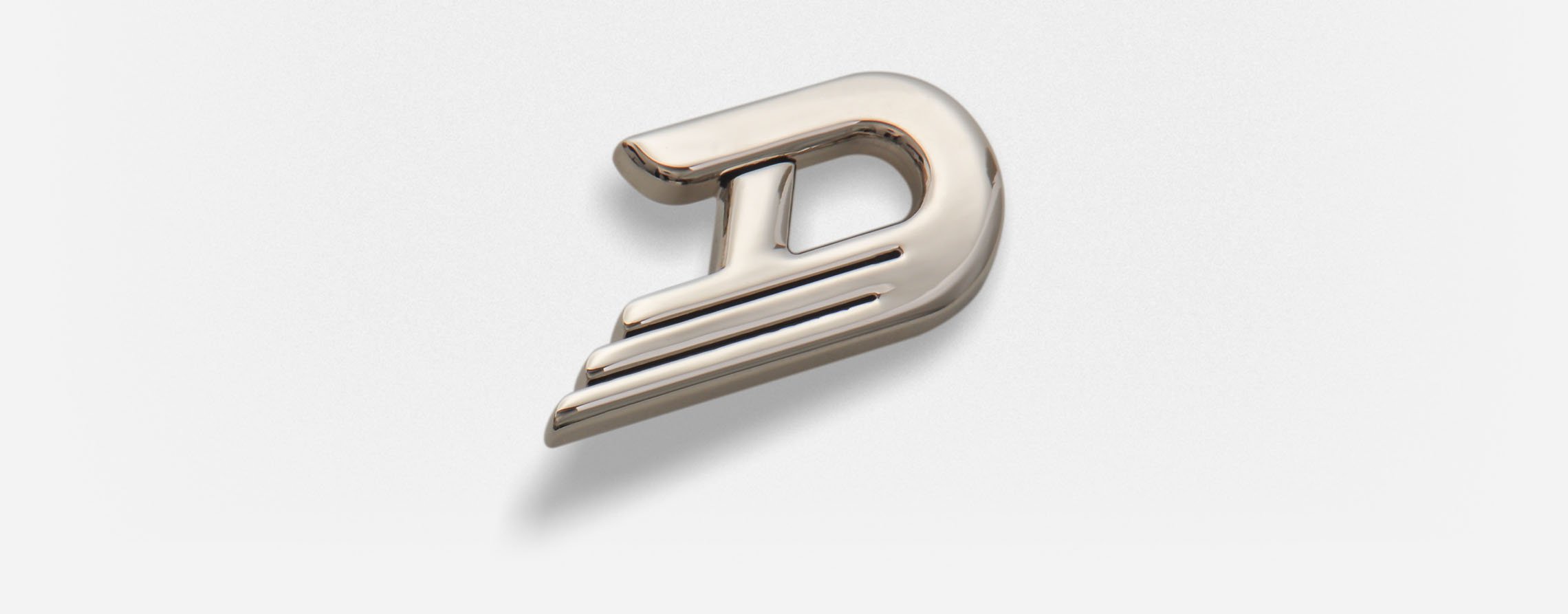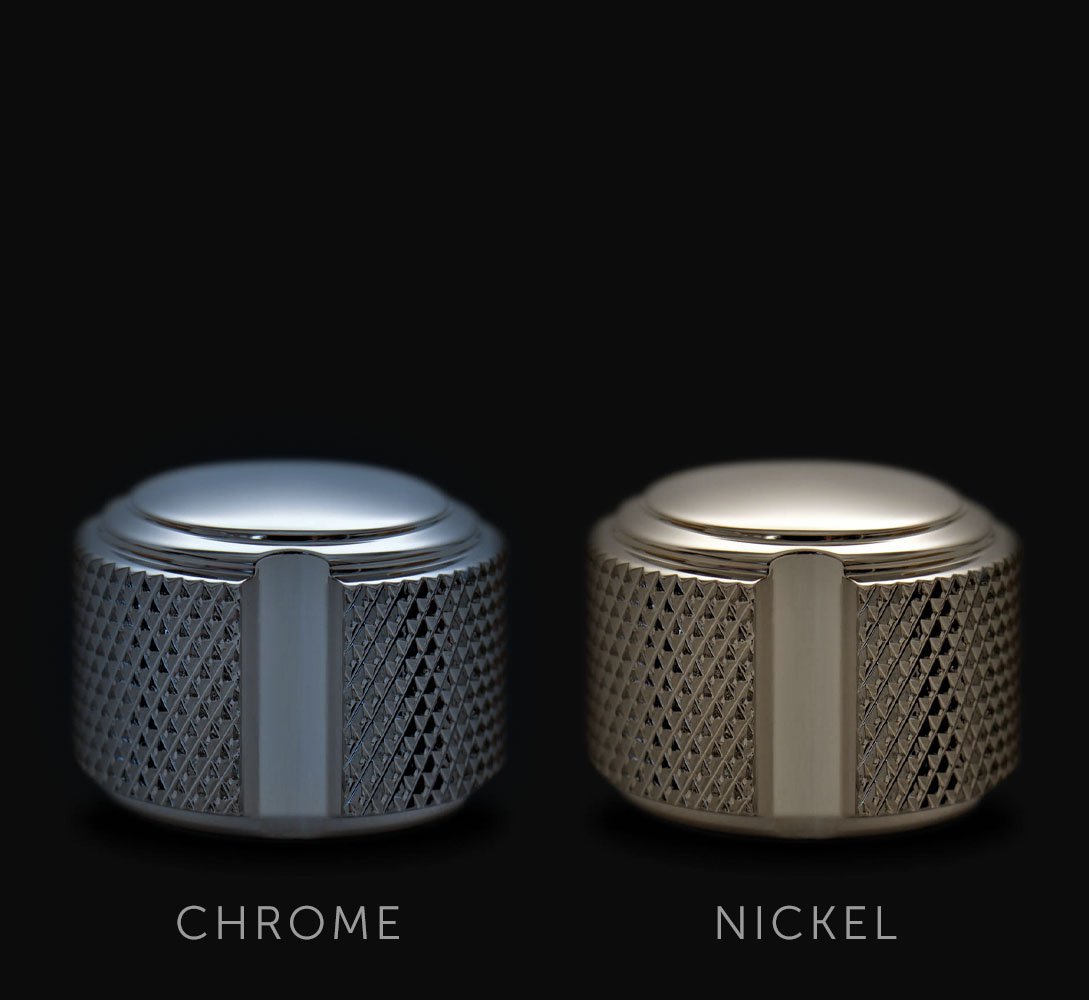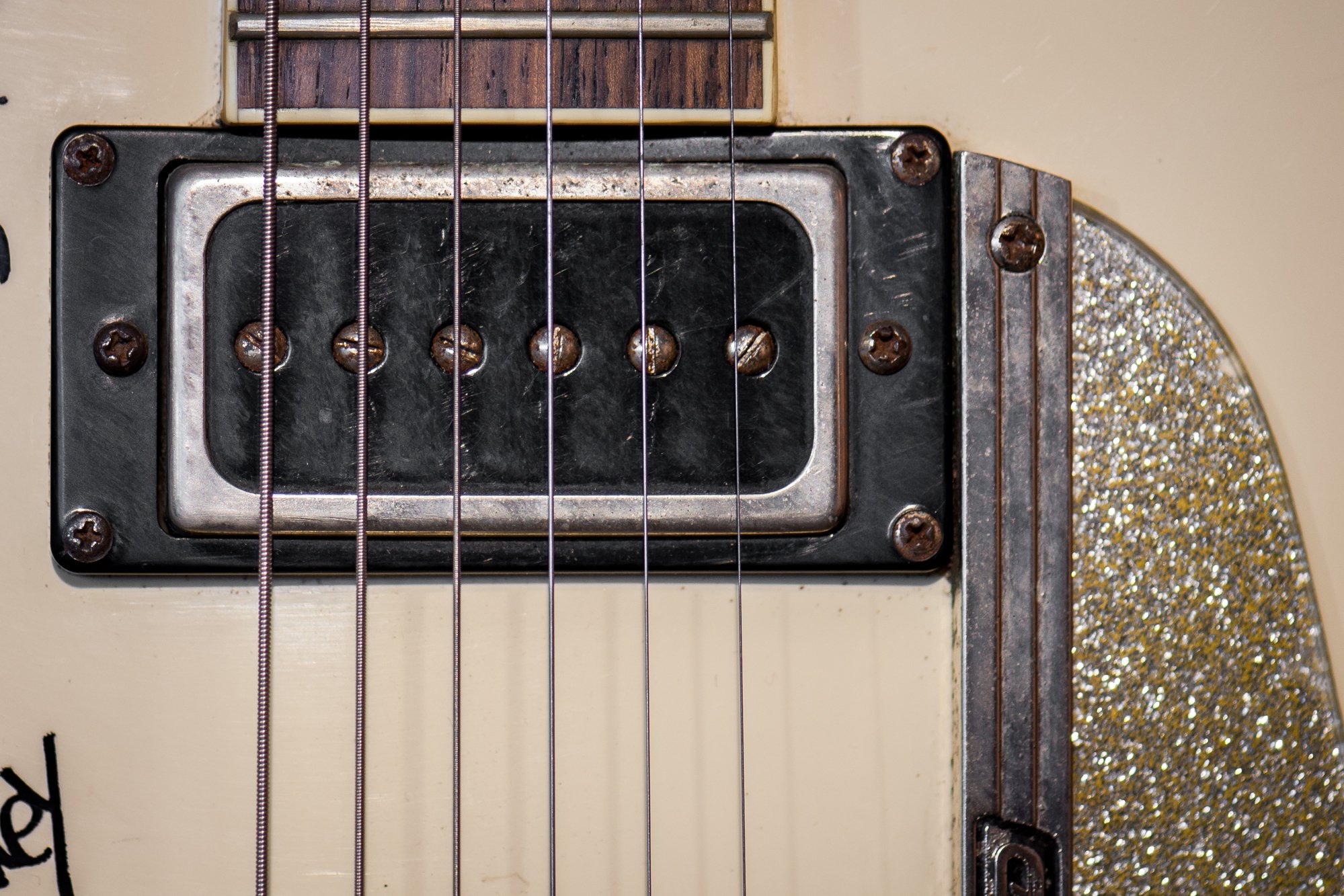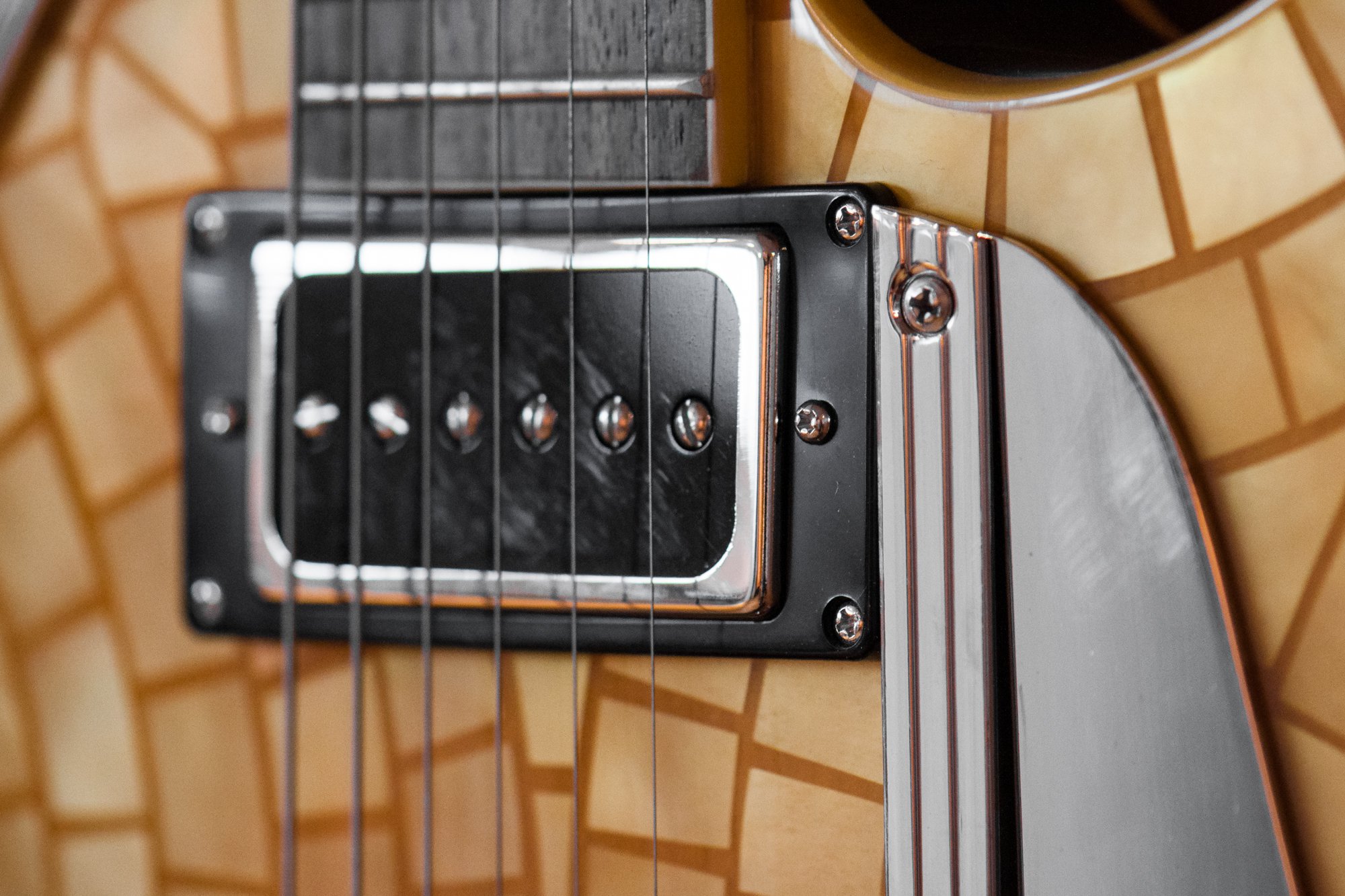
There are different stages in metal finishing, which is basically applying several coats of different materials onto a base material. The base material, usually brass or aluminium, is first coated with a very thin layer of copper which acts as a sort of primer for the following layers. After that, nickel can be applied to the workpiece. If you want to create a more robust and "easy-care" finish, you then apply a layer of chrome onto the already existing nickel layer. This whole process is called galvanisation. We don't have time for all the details here, but it's definitely worth to look up.
So basically, a nickel finish is the prestage of a chrome finish.

A nickel finish has some very distinct characteristics which other finishes do not have.
From the historical point of view one might say that it is the "old-school way to do hardware finishes". Leo used nickel finishes on his first instruments, simply because the process was cheaper and faster back in the day, but he also mixed nickel parts with chrome ones.
At some time, guitar manufacturers stopped using nickel as their primary hardware finish, mainly because chrome finishes give you a more durable hardware which can withstand a lot of wear and tear. Nickel hardware starts to become dull rather quickly, if not properly taken care of.
On the other hand, this is exactly the look that many guitar enthusiasts love about their nickel finished hardware. And this look could not be achieved with a chrome finish.
Having said this, there is something else which makes a nickel finish special from an aesthetical point of view, which also is the main reason to go for nickel in the first place. While chrome shines blueish and cold, nickel has a unique, beautiful, classy, golden and warm sheen to it. In direct comparison, most people even find the chrome finish looks "cheap".
If you are one of the people who do not like the worn, dull style of aged nickel hardware, here is some advice for you to keep the hardware on your Duesenberg in good condition.
Nickel is prone to age quickly if you have an aggressive hand sweat - which in fact most people do. Tuner buttons, pot knobs and the area on which your hand rests on the bridge while palm muting are pretty likely to show the first signs of tarnishing.
It's not bad for the hardware though. Apart from the aged look which some people might find unappealing, there are no downsides to worn nickel hardware. But if properly taken care of, you can maintain the beautiful sheen on your hardware for quite some time. The instruments shown below are roughly the same age, one being played exessively and cleaned probably infrequently, the other one being treated with kid gloves - both sound amazing.
You can use regular guitar cleaning products for maintenance.
For hardware and general finish cleaning, we recommend our own Duesenberg THE CLEANER. It is a solvent free, biodegradable cleaning product which also protects the lacquer on your instrument from fingerprints and dust.
For slightly aged hardware, we recommend Duesenberg ScratchEX. If the hardware shows some heavily tarnished areas, please use a soft metal polish very sparingly. You should however not use it regularly for normal cleaning purposes because you might start to rubb off the nickel if used extensively for years.
(Please click the photo to get to our cleaning products)






